In the Studio: Toro Y Moi
Toro Y Moi (a.k.a. Chaz Bundick) has come a long way over the past few […]
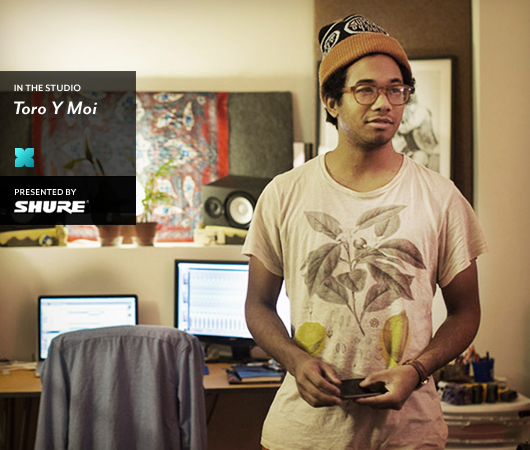
Toro Y Moi (a.k.a. Chaz Bundick) has come a long way over the past few years, both literally and figuratively. Having moved beyond the chillwave tag that was initially affixed to his music, this week the South Carolina native is releasing Anything in Return, his third full-length. The album was actually written and recorded in the Bay Area, the place Bundick now calls home after relocating to the West Coast more than a year ago. While the record still features many of his trademark hazy synths and sunny melodies, it also finds Toro Y Moi trying new things, most notably by experimenting with a sound palette that explicitly pulls from hip-hop, R&B, and pop. Curious about his production methods, we made a trip to Berkeley and paid Bundick a visit at his home studio. In the process of showing us his set-up, Bundick spoke about how his current space came together, the evolution of his production methods over the years, his growing interest in electronic music—something increasingly realized via his Les Sins side project—and his favorite pieces of gear.
XLR8R: This particular studio you’ve only had for a few months now.
Toro Y Moi: Yeah, since last August.
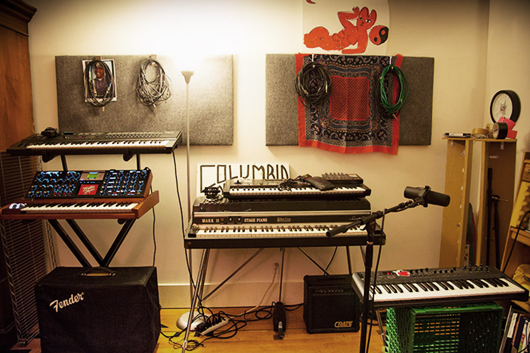
When you’re setting up a studio space, what’s important to you?
Aside from treatment, it would probably just be light. I need light to work. This room is windowless, so it took me a good couple of months to get used to it and be comfortable. I put this rug in here, and it really dampened a lot of the reverb. It really gave a better warmth to the room.
How do the decorative touches come about?
That just collects over time. Before, I didn’t have these random things hanging around, but I think that’s the best part about living in a blank space, is that you fill it up over time. I know a lot of people are anxious to get little decorations up, but I don’t want it to look like I’ve lived here for 10 years.
Your studio space is in the same place where you live. Do you like that?
I could see how people could maybe get lazy or just not like having their workspace at home, but I like it. It’s something I’m used to, just waking up and going straight to the studio, or going straight from the studio to bed, as opposed to driving somewhere or walking somewhere. It doesn’t bother me at all. It’s just me at home all day, working.
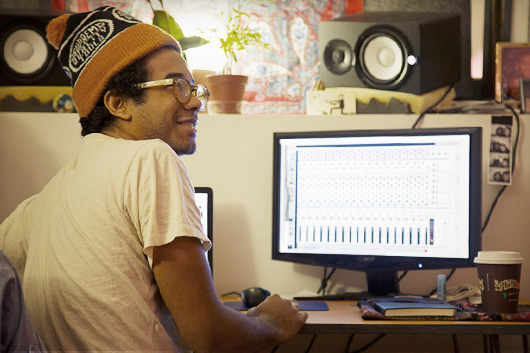
Do you ever have a problem unplugging from the studio, because it’s too accessible?
I try to get on a schedule. This is the first time [I’ve done that]. My girlfriend and I live together, so when you move in and live with someone, there are a lot of sacrifices. It’s something I’ve learned to do, is to just get on her schedule, so we can be together more—go to bed when she goes to bed, wake up when she wakes up.
It’s almost like working a 9-to-5 in your own house.
Right. I [also] try to do more things now, especially since I’m working full time on music. I draw more. I try to exercise. I try to get out and take a break from this cave.
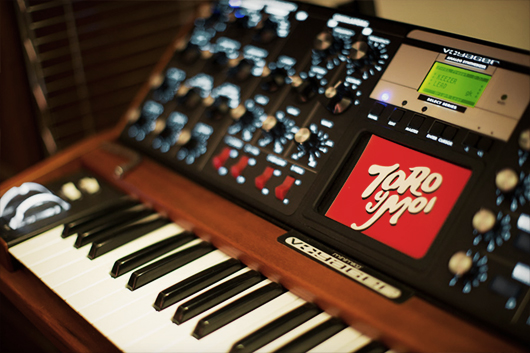
When you first started producing as Toro Y Moi, you were 15 years old. What kind of set-up were you using?
I started with a four-track, a Fostex cassette-tape four-track. It came with a microphone and maybe headphones. It was just me and an acoustic guitar and this Roland keyboard that had a bunch of orchestra sounds and fake pianos and stuff. I was doing drum beats and piano with that—everything was coming from this one keyboard. It progressed from there. I bought a bass, and started adding that. I bought a drum set, and started adding that. Then I got a laptop, and once I got a laptop in college… well, I got it for college, but then I ended up getting Fruity Loops from a friend. From there, I just started using the laptop for sampling and programming.
The first record, Causers of This, is pretty heavily sample based, right?
There are samples in it, but a lot of it is just programmed MIDI stuff. There are a lot of soft synths and default drum patches.
Were you using Reason at that point?
Yeah, that’s when I started. “Blessa” was actually the first song I made with Reason, and I was really just experimenting with what it could do. That got big, I signed with Carpark, and Causers of This was pretty much me experimenting with Reason and me trying to figure out how I was going to make an album.
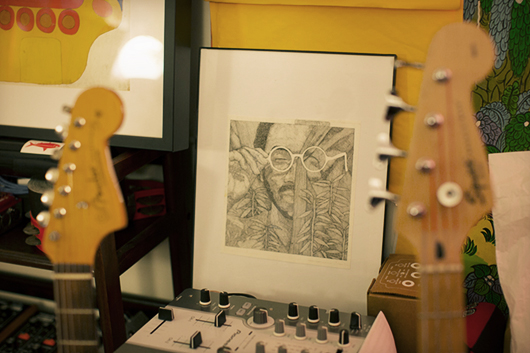
When the album got big and you had to start playing live shows, was it a challenge to take this Reason-based album and translate it into a live set?
Yeah. At first, I started with a MIDI keyboard and a guitar and a loop pedal. I had never done that before and I didn’t like it. I wasn’t used to being on stage with a laptop and being solo. I got a band as soon as possible. I sort of had to start over. We couldn’t really make the songs sound like they did on the album. So, when it came time to do Underneath the Pine and this new album, I knew I wanted to play them live.
So was Underneath the Pine made in more of a band context, or were you still writing everything?
It was still solo, but it was written with band in mind. I knew that I needed a bass part and a drum part that would be solid live. That’s why the album was so groovy I guess.
Were you still writing on virtual instruments, or did you switch to “real” instruments?
I actually did it on the Roland JX-3P synth and the Rhodes electric piano. [I also used a] bass, just a Squire Bronco. The only thing [from the album] that’s not here is the drum set, this cheap drum set I got for Christmas one year.
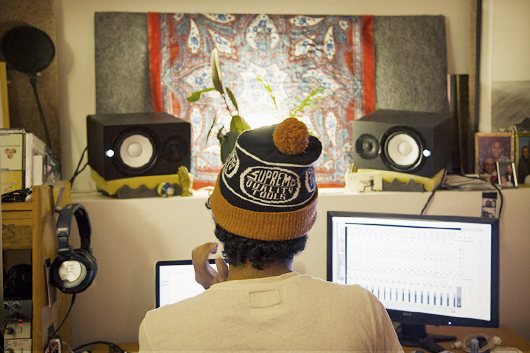
Were you playing everything as well?
Yeah, I played everything. I took it to the studio in Athens—it’s called Chase Audio—and we mixed it there. That studio is really amazing because everything is anti-plug-in and anti whatever ProTools wants you to do. Everything is hardware, everything is analog. That’s what I was going for on the album, so I really wanted to go there.
How did you record it? Were all of the sounds just generated by your synths?
At the time, I was recording with a Boss digital nine-track. I tracked everything into that, and exported it into Reason. I was using Reason 3 or something like that at the time, and that was before Reason was made to work with WAV files. I would draw it out in the NNXT and mess with it there. So, if I had to listen to the middle of a song or something, I had to start from the very beginning so the MIDI key would pick it up. At the time, I really didn’t know what I was doing. [laughs] If I knew that I could loop stuff—that just never occurred to me. I just thought, “Oh, I have to play the drum part all the way through,” instead of just looping this section.
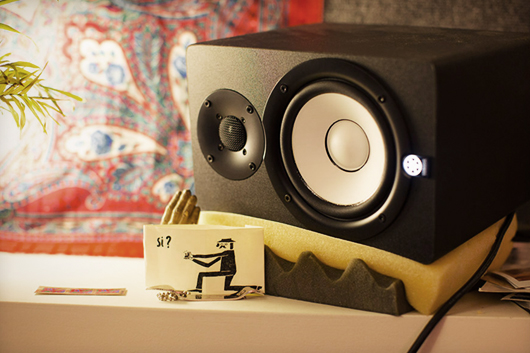
You were playing your drum tracks all the way through?
Yeah, because it was just me hitting record, and I didn’t have a way to punch in, so I would seriously have to—because of the hardware and the way it works, the timing. So yeah, when [I found out] about drum loops, I was really kicking myself, like, “Crap.”
For the new album, Anything in Return, what was the recording process like?
I wasn’t here. I was at this old apartment complex, living underneath a hoarder crazy lady. She would not let me make a sound. She was really anal about any sounds going on. I worked in headphones a lot, so I feel like that sort of made it what it is. It’s such a headphone-heavy album, just the way that things are panned and mixed. I knew I wanted to not use a lot of soft synths. Pretty much everything came from the Moog, the JX-3P, the Rhodes, and the Nord. Then, at studio where I mixed it—Different Fur—they had a few different things, like real piano, which was really cool. We mic’ed up the real piano with four different contact mics. They also had a Korg MS2000.
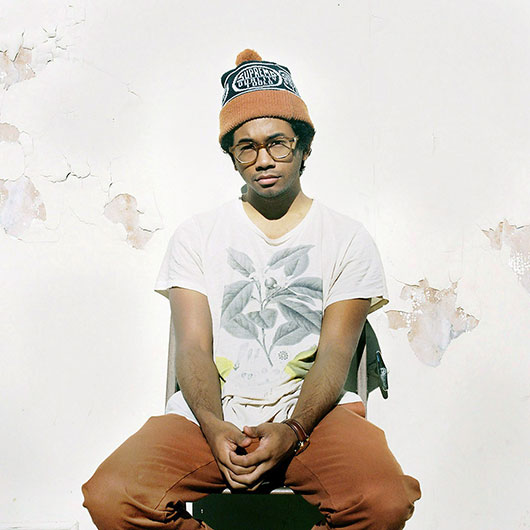
What software are you using to record now? Are you still on Reason?
Yeah, I use Reason 6. The new Reason has that SSL board, which is pretty cool. It’s super accurate, they have all those different EQs and filters.
On Anything in Return, are you still writing and playing everything?
Yeah, I did that again. I think on the next record though, I definitely want to try and have a more live aspect attached to it. I’m just ready to try something new.
The new album has more of a hip-hop and R&B influence, was that intentional?
Yeah, I was definitely listening to a lot of hip-hop and R&B. I like to make hip-hop beats, and I kind of just wanted to do that, to see if I could turn them into pop songs. It’s sort of me just having fun and experimenting with a more poppy sound.
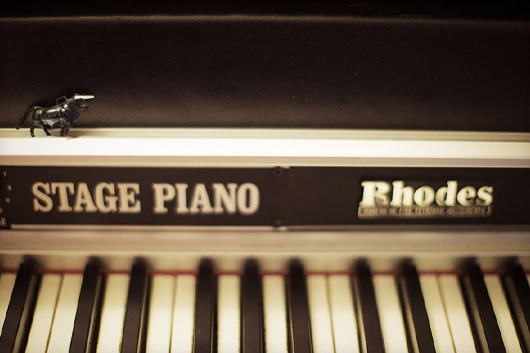
With your Les Sins project, are the production methods the same? Do you use the same equipment?
Yeah, the same stuff. With Les Sins, [that was when] I started to get out of the habit of using soft synths. I try to program differently too. I sample drums differently, try to make [the music] weirder. I don’t want to do that French thing any more. [My] newer stuff, it’s definitely darker and more groovy than just four on the floor.
Do you still see Toro Y Moi and Les Sins as separate things?
Yes, I definitely do. With Les Sins, I’m not afraid to do some dark stuff or just completely alienate a crowd. With Toro Y Moi, I definitely want to keep that pop element in there. With Les Sins, I’m comfortable with making a seven-minute dance track, and [making it for people who understand] that’s how dance tracks work.
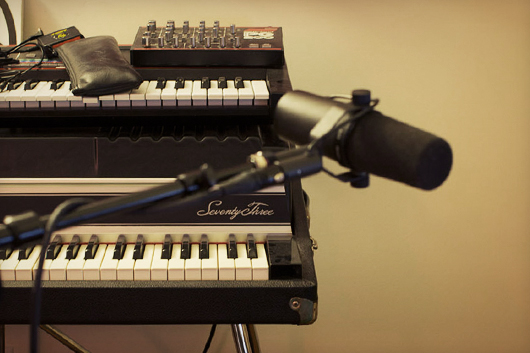
You don’t have a long history with club culture or house and techno. Getting into it, how have you learned to make it?
Listening to records, mostly. What I like the most about dance tracks is the production, just how big the drums can sound and stuff like that. I like the drums the most.
Who are some producers that you like in that realm?
I like Motor City Drum Ensemble. Kyle Hall. I like a lot of the Hessle Audio stuff. I like Jeremy Greenspan, and of course Daphni and Four Tet. I think Four Tet’s grooves are so on point. He always just makes really emotional dance music that’s not crazy overproduced.
Have you been spending more time in that world?
Yeah. I’ve actually started DJing more. I try to DJ a lot now. I recently bought a mixer, so I can practice.
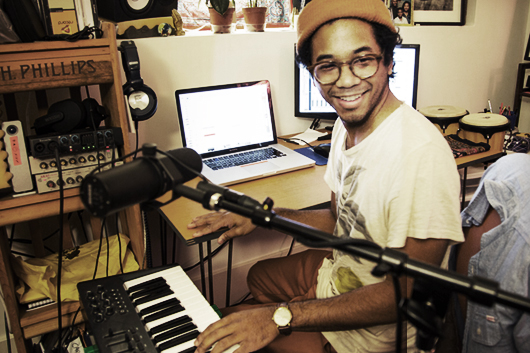
Getting back to your own production, at this point, how much of the music you produce is being made by a “real” instrument?
Ever since I started on Anything in Return, it’s been like 90% hardware. The only thing that’s programmed are seriously just the drums. There might a couple of pads from Reason or something, but the only thing that’s coming out of software are the drums. [Also,] if I’m ever using a straight-up sine wave or a triangle wave, that’s coming from the sampler I’m using on Reason. Samples, too. Anything that’s sampled.
Do you do your own mixdowns?
I do my rough mixes. I’m trying to not release stuff that hasn’t been mixed in a proper studio. There are a couple of tracks I might release [because] I just want to get them out or something, but when it comes to the album quality, it’s definitely going to be mixed in the studio.
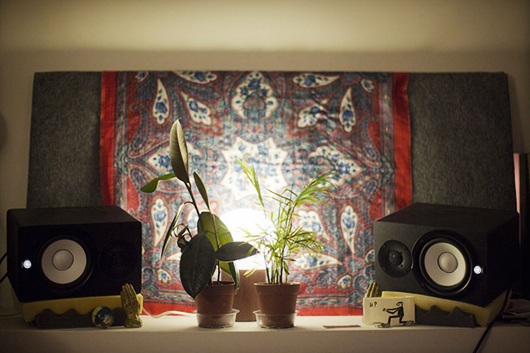
After you’ve spent so long making something, is it hard to then hand it over to someone else?
I was there for both mixing sessions, for this album and the previous album. They do take control, so I have to take their advice and just trust them on some certain things. They’ll say, “That’s as loud as you want to go,” and I’ll say, “No, I want it louder.” And they’ll say, “Trust me, this is good,” and then it gets mastered and it’s perfect.
Last question—what are your favorite pieces of gear?
Probably my Moogerfoogers. I can’t leave them alone. I use the Cluster Flux a lot on the keys. It’s just a chorus pedal that can also be a weird LFO pedal. Also, I recently got this Yamaha DX7s synth. It’s awesome. I’m using that on everything right now.
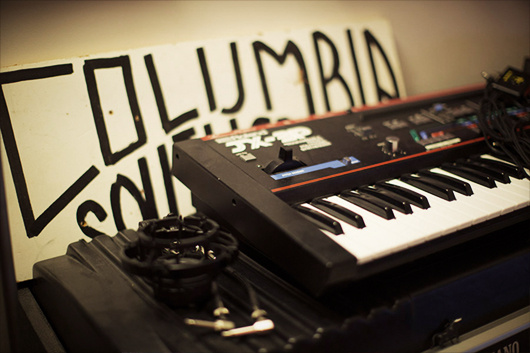
Toro Y Moi’s Anything in Return is out this week via Carpark.

